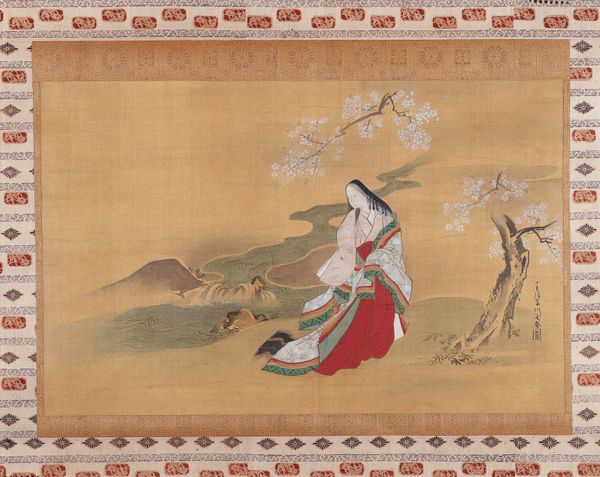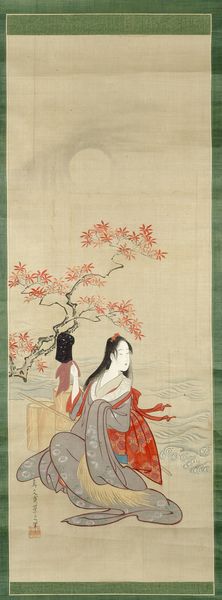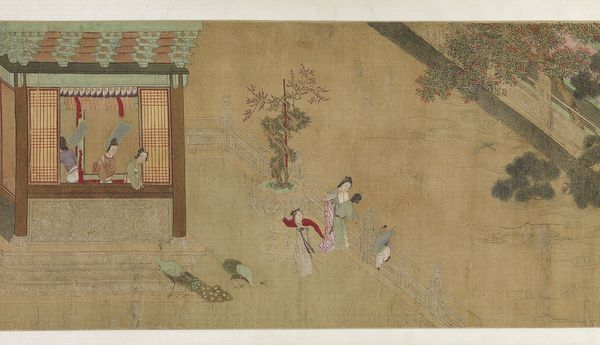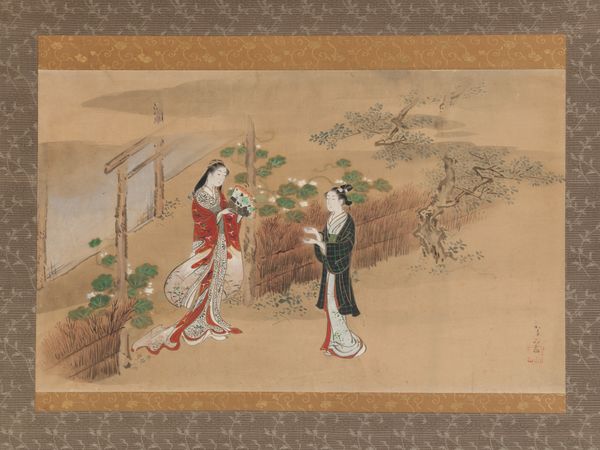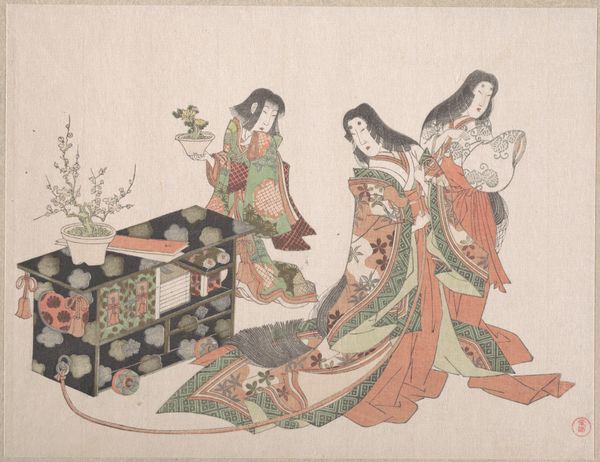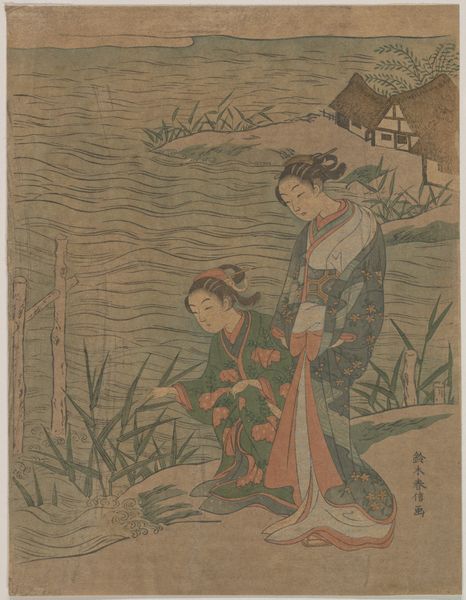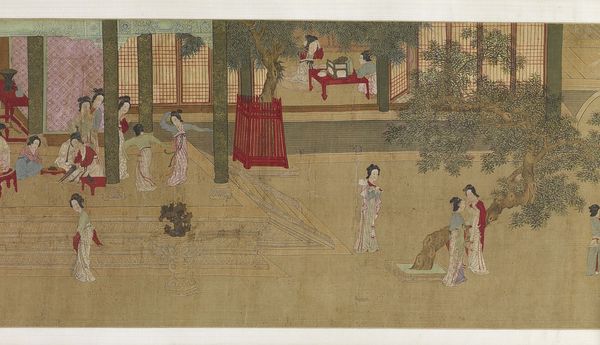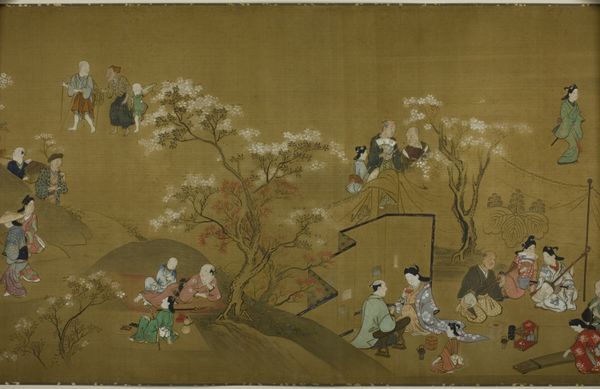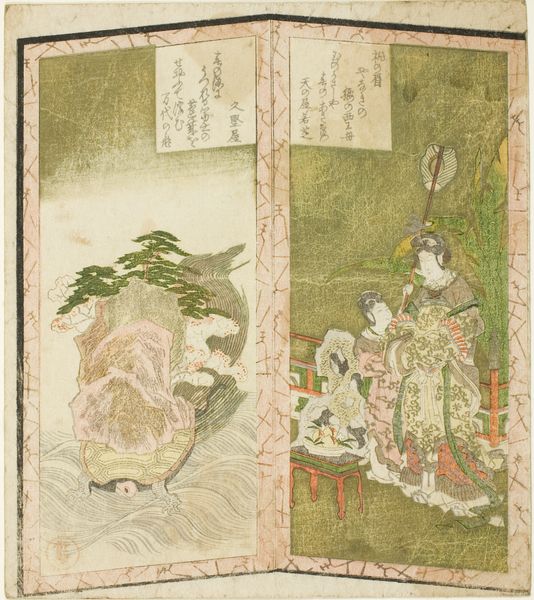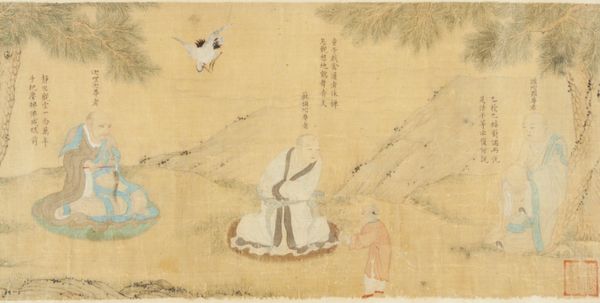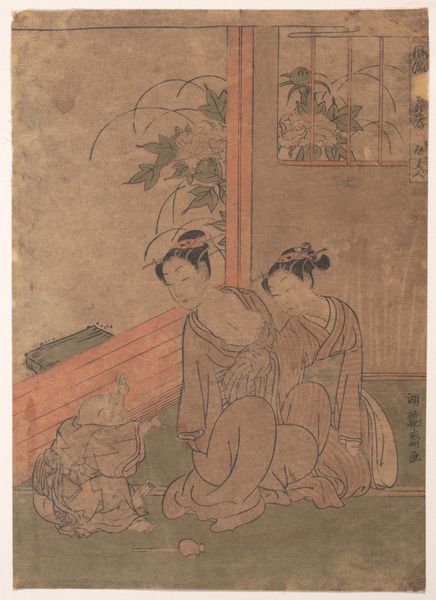
painting, watercolor
#
portrait
#
water colours
#
painting
#
asian-art
#
landscape
#
figuration
#
22_ming-dynasty-1368-1644
#
watercolor
#
china
Dimensions: 5 x 6 3/4 in. (12.7 x 17.1 cm)
Copyright: Public Domain
Curator: Before us is an intriguing painting titled "Two Ladies in Foreground of Landscape." The piece is from China, dating back to the Ming Dynasty, specifically 1368 to 1644. It now resides at the Metropolitan Museum of Art. Editor: My first impression is one of muted elegance. The warm, earthy tones of the watercolor almost blend into a single layer, giving it a feeling of serene domesticity. I'm curious about the material—it looks like silk. Curator: Indeed. The use of watercolor on silk was a refined, albeit less durable, choice, reflecting the values placed on delicate aesthetics within the scholarly and courtly settings. Editor: This subtlety is fascinating, isn’t it? Unlike grand landscapes meant to inspire awe, the scale and composition feel much more grounded, more...intimate. The presence of these two figures dominates, and I keep wondering about their relationship to each other and to their society. Curator: It raises important questions about women's roles within that social framework. Were they from the literati class, engaging with the arts and cultivating aesthetic appreciation? Their clothing may reveal something about their relative status, in comparison to the environment they inhabit, too. Editor: Definitely! Look at the contrast. The way the red and green in their garments stand out against the tan monochrome of the backdrop points towards the use of pigments. You know, I wonder where they would source colors. I wonder if they made them themselves, what the division of labour and time looked like? Curator: Pigments like these were indeed significant markers of economic means and access. The intentional depiction here subtly acknowledges that division and underscores a culture of trade in colours themselves. Editor: It feels less like a grand statement and more like a glimpse into the everyday experience and status, all wrapped up in a visually harmonious package. What do you think the role of the museum is in contextualizing pieces that rely so much on a sense of everyday nuance? Curator: It’s a crucial responsibility. We're tasked with peeling back those layers of cultural context, inviting a contemporary audience to understand these works not just as art objects but as documents reflecting the power structures. This then fosters dialogue, and ideally, makes way for change. Editor: That makes you consider everything differently, doesn't it? It brings us back to considering the historical conditions surrounding its production to question the means by which we preserve our material culture. Curator: Absolutely.
Comments
No comments
Be the first to comment and join the conversation on the ultimate creative platform.
